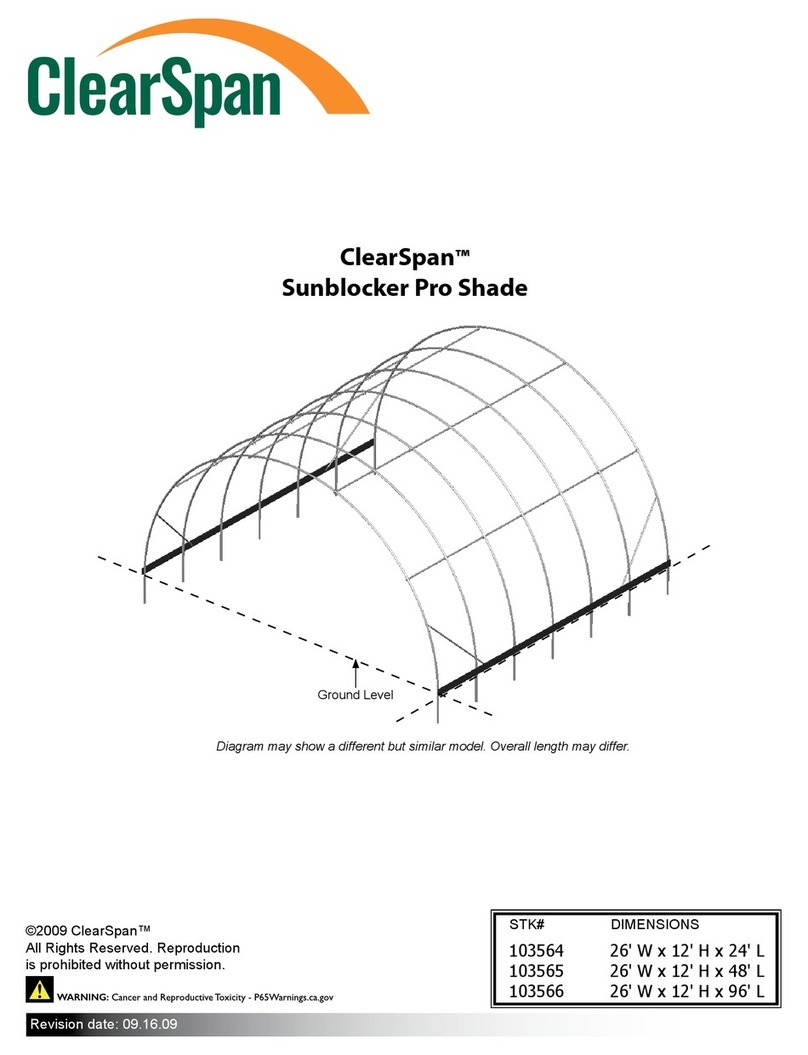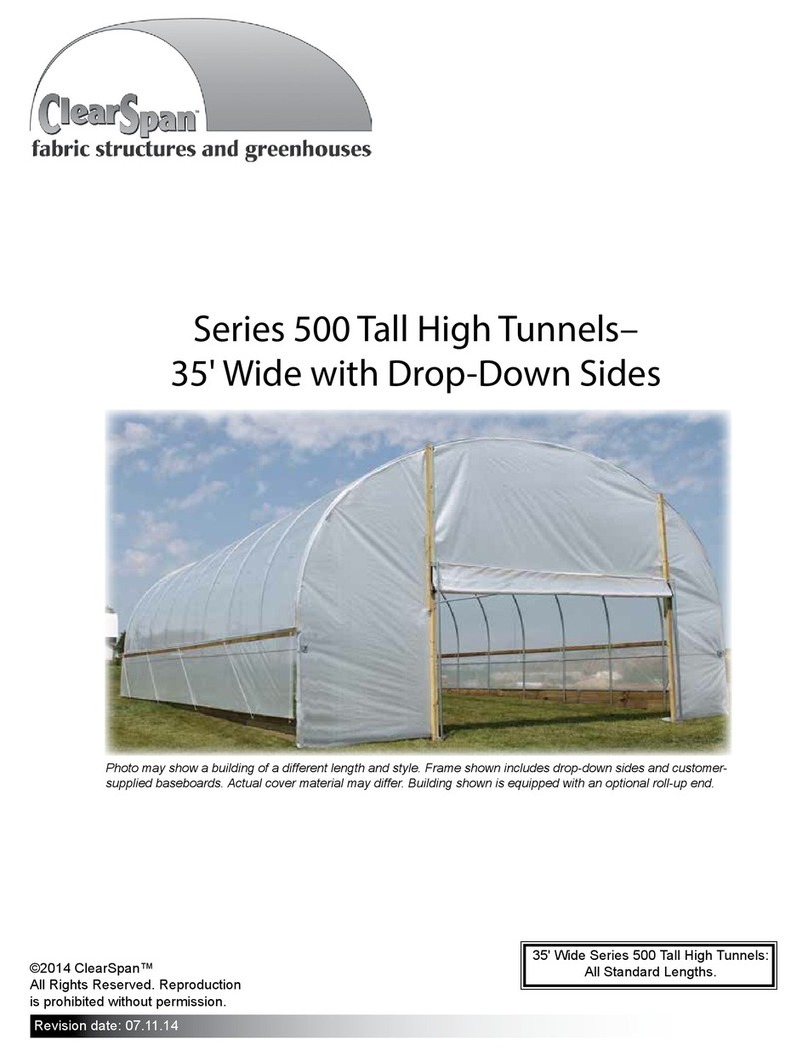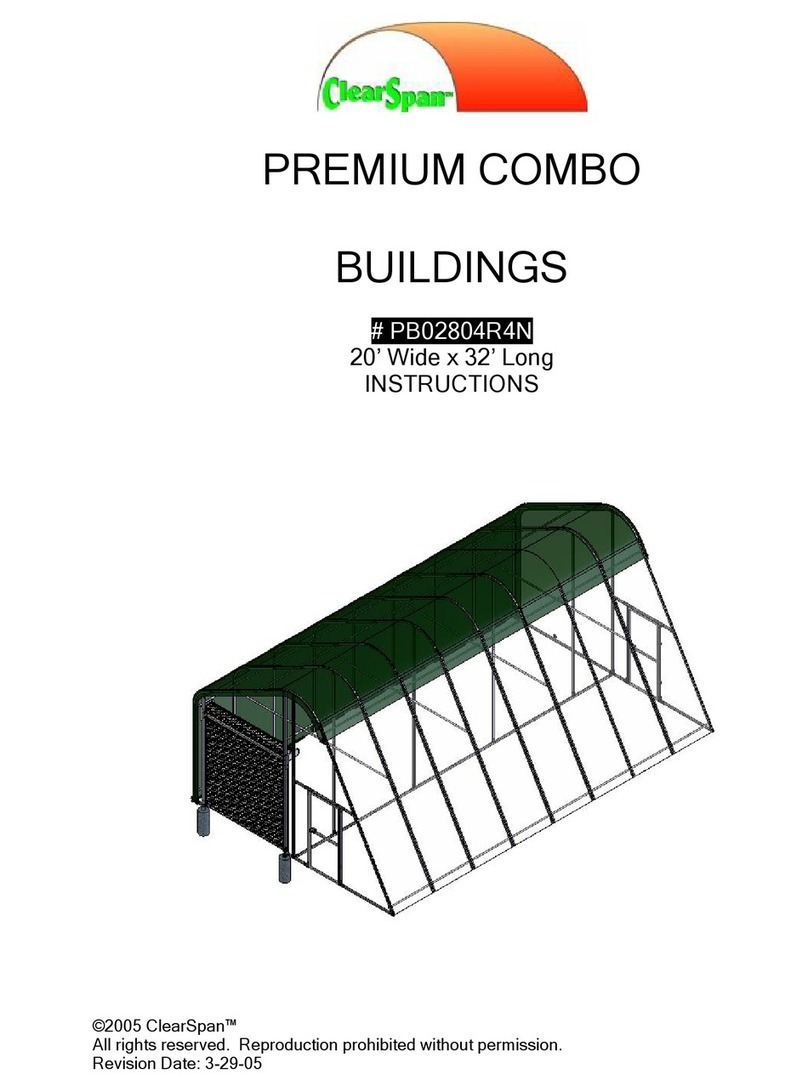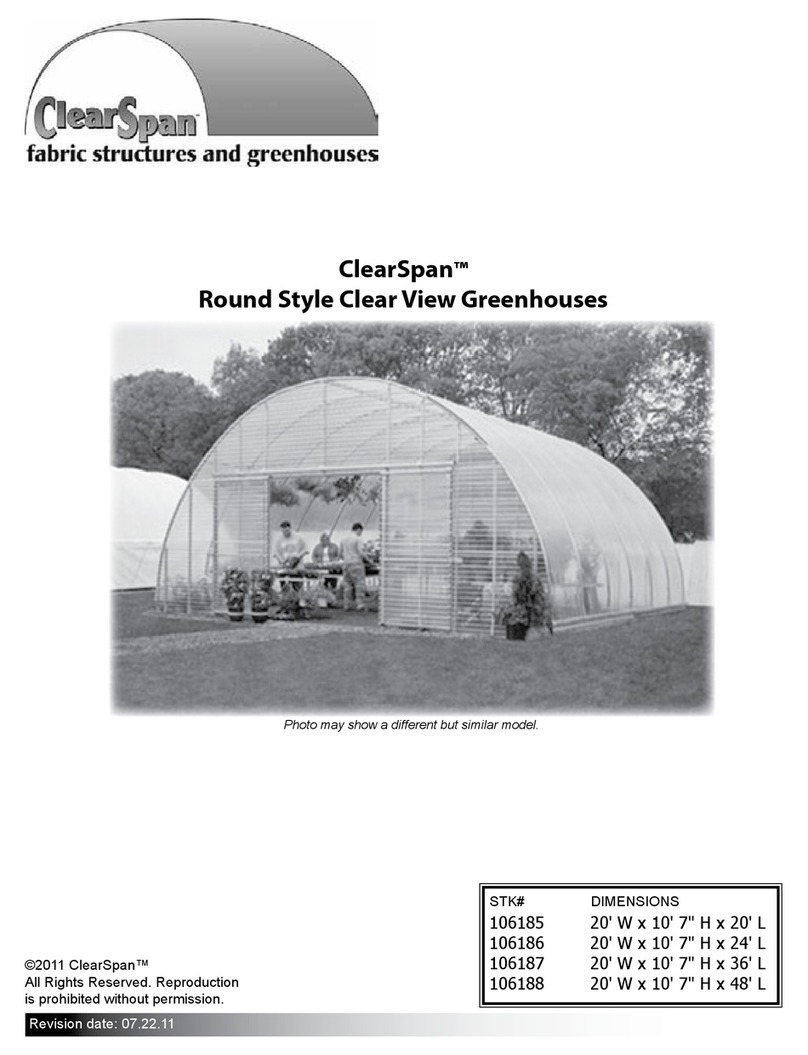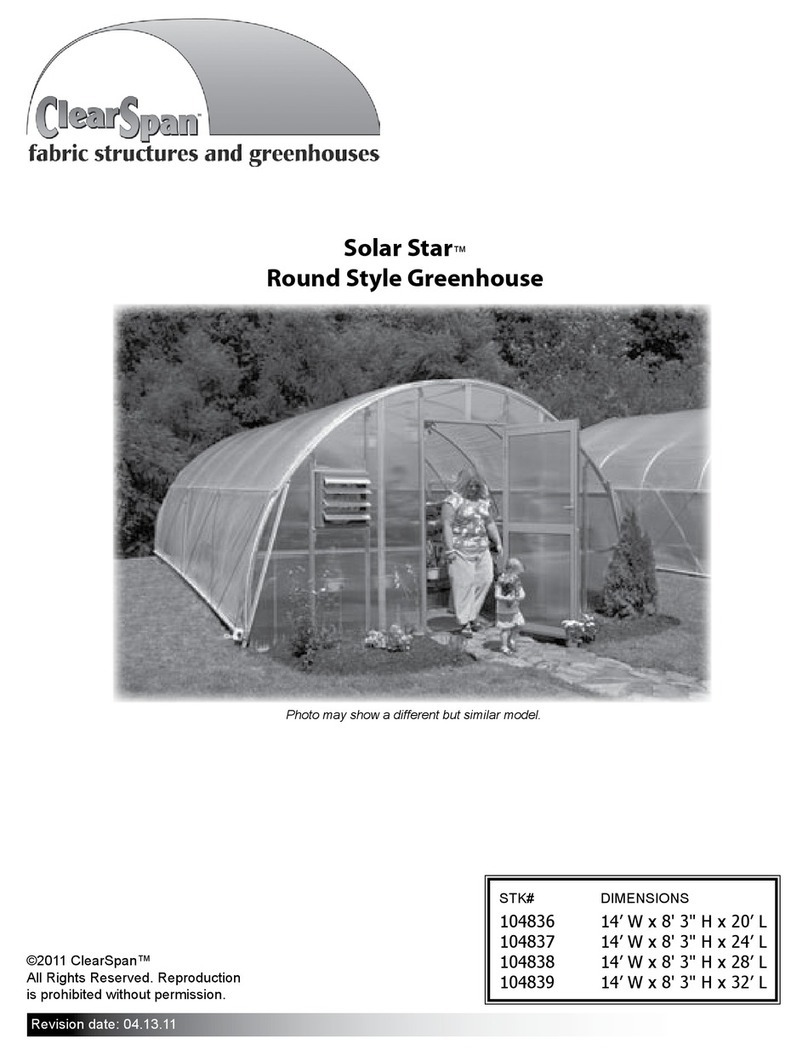
3
Revision date: 07.11.14
Important Information
ASSEMBLY
Following the instructions as presented will help ensure
proper assembly. Failing to follow these steps may result
in an improperly assembled and anchored structure.
NOTE: Once the main frame is assembled, many of
the remaining procedures can occur simultaneously,
depending on available assistants and equipment.
Before you begin, review all technical documents to
better understand overall building design.
The steps outlining the basic frame assembly are as
follows:
1. Verify that all parts are included in the shipment.
Notify Customer Service for questions or concerns.
2. Read this guide and all additional documentation
included with the shipment before you begin.
3. Gather the tools, bracing, ladders, lifts, and
assistants needed to assemble the structure.
4. Check the weather before you install the roof cover
and any end panels (if equipped). Do not install
covers or panels on a windy or stormy day.
5. Re-evaluate the location and site based on the
information and precautions presented in the
documentation included with the shipment.
6. Prepare the site (if applicable) and set the ground
posts in concrete. If building includes end framing,
review those instructions and drawings for additional
end framing requirements.
7. Assemble rafter components and rafter support kit
components (if equipped). Optional support kits
require an additional purchase.
8. Assemble main building frame (rafters, cabling,
purlins, etc).
9. If used, attach baseboards and ribbon boards
(customer-supplied).
10. Attach 111613Z144 aluminum channel along the
sides for cover installation. Consult these instructions
and all drawings for additional details.
11. Install the optional ridge vent frame if equipped.
12. Install end wall frame, door frame, and end wall
cladding if equipped.
13. Attach 111613Z144 aluminum channel to the end
rafters.
14. Install main cover. This applies to film or 5.2 oz cover
material. If building is equipped with a ridge vent,
consult those instructions for additional steps for
cover installation.
15. Install roll-up (or drop-down) sides and anti-billow
ropes.
16. Complete and return all warranty information as
instructed if present.
REQUIRED TOOLS
The following list identifies the main tools needed to
assemble the shelter. Additional tools and supports may
be needed depending on the structure, location, and
application.
• Tape measure or measuring device and marker to
mark locations on the pipes and rafters.
• Variable speed drills and impact drivers. (Cordless
with extra batteries works best.)
• Metal-cutting saws or tools to cut pipe and
aluminum.
• Drill bit set
• Wrenches and impact socket set, hammer, and
gloves.
• Adjustable pliers and self-locking pliers.
• Ladders, work platforms, and other machinery for
lifting designed to work safely at the height of the
building.
• Safety equipment to protect head, eyes, hands and
feet.
UNPACK AND IDENTIFY PARTS
The following steps will ensure that you have all the
necessary parts before you begin to assemble the
shelter frame.
1. Unpack the contents of the shipment and place
where you can easily inventory the parts. Refer to
the Bill of Materials/Spec Sheets.
2. Verify that all parts listed on the Bill of Materials/
Spec Sheets are present. If anything is missing
or you have questions, consult the Pictorial Parts
Guide and all diagrams for clarification, or contact
Customer Service.
NOTE: Do not open plastic bags containing smaller
parts such as fasteners or washers at this time.
Simply verify quantity.






















